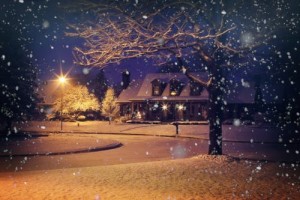 You might be done with mowing, but there are still some things you can be doing to help your lawn survive the winter and get a good start when it comes out of hibernation this spring.
You might be done with mowing, but there are still some things you can be doing to help your lawn survive the winter and get a good start when it comes out of hibernation this spring.
Mow Close
For your final mow, cut the grass as short as possible without cutting into crowns. This will keep the grass from holding moisture that can encourage the growth of pests and diseases like snow mold.
Look for Weeds
If you live in an area that doesn’t freeze over in winter, grass growth will slow down instead of going into hibernation. Likewise, weeds won’t be out in force, but they’ll still be active. Treating them now is easier than trying to halt their growth when they start germinating in the spring.
Clean Up Your Lawn
Before the first snowfall, do a sweep of your yard and remove toys, decorations, chains, bar-b-q grills and anything else lying on the grass. The weight of these objects can create dead spots in your lawn, especially when they’re loaded down with snow.
Mark Your Pavement
After heavy snowfalls, it can be hard to see where the pavement ends and your lawn begins. Placing snow stakes at the edge of your driveway and sidewalk will keep you from pushing your snow blower into the turf where the auger can claw through the soil.
Avoid Lawn Traffic
Foot and vehicle traffic can compact soil, stunting grass growth and increasing weeds. Add in ice, wet soil and, hibernating grass, and you have a recipe for lawn destruction. Avoid parking vehicles on your lawn, and keep your sidewalks clear to encourage visitors to walk on them. This is especially important when your lawn is covered in ice: whenever an ice-encased blade is stepped on, the ice tears the blade apart, leaving a small bald spot.
Control Salt Applications
Salt can clear the last layer of ice on your pavement, making it safe to drive and walk on. However, that salt doesn’t just disappear when it’s dissolved: the resulting saline water can kill your grass. Try to stick to the minimum application density listed on the package, and avoid application next to grass and plants. If you need to cover a large area, use calcium chloride-based ice melt. It won’t make runoff salty, and it works at much lower temperatures than rock salt.
Take Care of Your Evergreens
While most plants go into hibernation during the winter, evergreens are still active, making them susceptible to damage from harsh winter conditions. A combination of dry conditions, cold temperatures and heavy winds can strip away moisture, causing desiccation or “winter burn.” First appearing as yellow or red-tipped needles, this discoloration can spread into branches as the plant dries out.
To protect your evergreens, cover the root zone with mulch. This creates an insulating blanket that prevents freezing. If you have an evergreen that was planted recently, consider covering it in a burlap sack during hard freezes to shield it from wind. Keep watering these plants until the ground is frozen, aiming for a total of one inch of water per week including rainfall.
Take the Time to Fix Your Lawn Equipment
Now is a great time to fix your equipment so it’s ready for next spring, whether that means getting a new bag for your mower or doing a complete overhaul. Cubparts.com is an authorized dealer for Cub Cadet and their manufacturing partners including Briggs & Stratton and Kohler, so we’re able to offer replacement parts for everything on your equipment. Just pick your model and serial number, and our search engine can show you factory diagrams and descriptions to help you find the part you need. Looking for accessories? We carry those, too. No matter what you order, we can ship it to any address in the U.S. or Canada.
